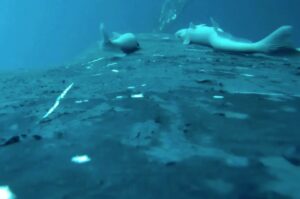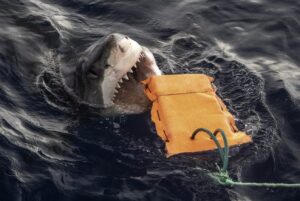Cyril Derreumaux, 45, is attempting to kayak from San Francisco to Hawaii for the second time. He first tried the crossing last year but had to be rescued after just five days.
On that occasion, his first few days went smoothly, but then the storms rolled in. He faced winds up to 80kph and 4.5m swells as he huddled in his cabin, unable to paddle. His vessel suffered significant damage, and water started to leak into the cabin. Forecasts showed that the situation was going to worsen so he aborted his crossing. Now he is ready to try again.

Photo: CyrilDerreumauxAdventure
In the last year, he has tried to shore up his custom-made kayak, Valentine, for the journey. He modified the sea anchor system, installed a satellite communication system, and added both a manual bilge pump and side panels to keep water out of the cockpit. He has also trained for high wind situations off the coast of Santa Cruz, California. When he sets off, Valentine will weigh approximately 400kg.
“When it comes to learning about crossing an ocean as a solo person….there is nothing that will prepare you for what’s coming other than living through it,” he said recently in one interview.
Derreumaux has challenged himself on the water since at least 2016. He took part in the Great Pacific Race and rowed in record time with three partners from California to Hawaii. He also raced a canoe on both the Sacramento River (160km) and the Yukon River (715km). But this will be his hardest challenge by far.

Photo: CyrilDerreumauxAdventure
Inspired by Gillet’s 1987 epic
The journey has only been completed twice by means of paddling. In 2019, Antonio de la Rosa completed it on an SUP, but Derremeux is trying to replicate a more legendary crossing: Ed Gillet’s 1987 solo kayak across the Pacific. Gillet almost perished on the journey. His primitive communications conked out, and he ran out of food and was reduced to eating toothpaste.
Though the general challenge is similar, the two expeditions are vastly different. Gillet used a six-metre, store-bought, Tofino double kayak. Derreumaux’s vessel, with its sophisticated technology and aft sleeping cabin, is something Gillet could only dream of.
Derreumaux hopes to complete the 4,444km journey in 70 days. He plans to start paddling at sunrise each day. After five hours, he will break for lunch, then paddle for at least another five hours. He won’t be able to sleep through the night but will wake up every two hours to check the boat and his position.
He plans to begin his crossing within days. You can follow his progress here.






